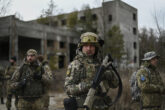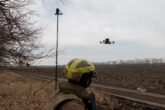August 30, 2017
Our navy is broken, and that is a bad thing
The recent string of ship collisions in the western Pacific is a clarion call to the American nation that its Navy is on the brink of combat ineffectiveness. This dismal condition is the result of a long string of irresponsible budgetary actions and strategic mistakes on the part of the nation’s leaders. While it is true that the string of mishaps has, thus far, been limited to one region of the world, the underlying contributing factors of a steady demand for 85-100 deployed ships, a shrinking fleet, and shorter and inadequately resourced maintenance and training periods are eroding the fleet’s effectiveness everywhere. The unique stresses of the western Pacific simply present the ships operating there as the canaries in the proverbial coal mine.
Read the full op-ed in Defense One.
More from CNAS
-
Defense / Transatlantic Security
When Defense Becomes Destruction: Austria-Hungary’s Mistake and Ukraine’s RiskThis article was originally posted on War on the Rocks. The southeastern Polish city of Przemyśl, with its elegant 19th century Habsburg-era train station, remains one of the ...
By Franz-Stefan Gady
-
Defense / Transatlantic Security
Ukraine’s Catch-22 MomentThis article was originally published in the Financial Times. In Joseph Heller’s wartime classic, Catch-22, the protagonist Yossarian seeks out the US army surgeon Doc Daneeka...
By Franz-Stefan Gady
-
CNAS Insights | Budgetary Own Goals Undermine “Speed and Volume”
On November 7, Secretary of Defense Pete Hegseth laid out a plan to overhaul the Department of Defense’s (DOD’s) acquisition system. Placing an emphasis on delivering new capa...
By Philip Sheers, Carlton Haelig & Stacie Pettyjohn
-
Drones: Who Is Making the New Weapons of War?
From Ukraine and Russia to Gaza and Sudan, drones have become a key weapon of war. Which companies are making them, and profiting from this rapidly expanding but controversial...
By Stacie Pettyjohn




